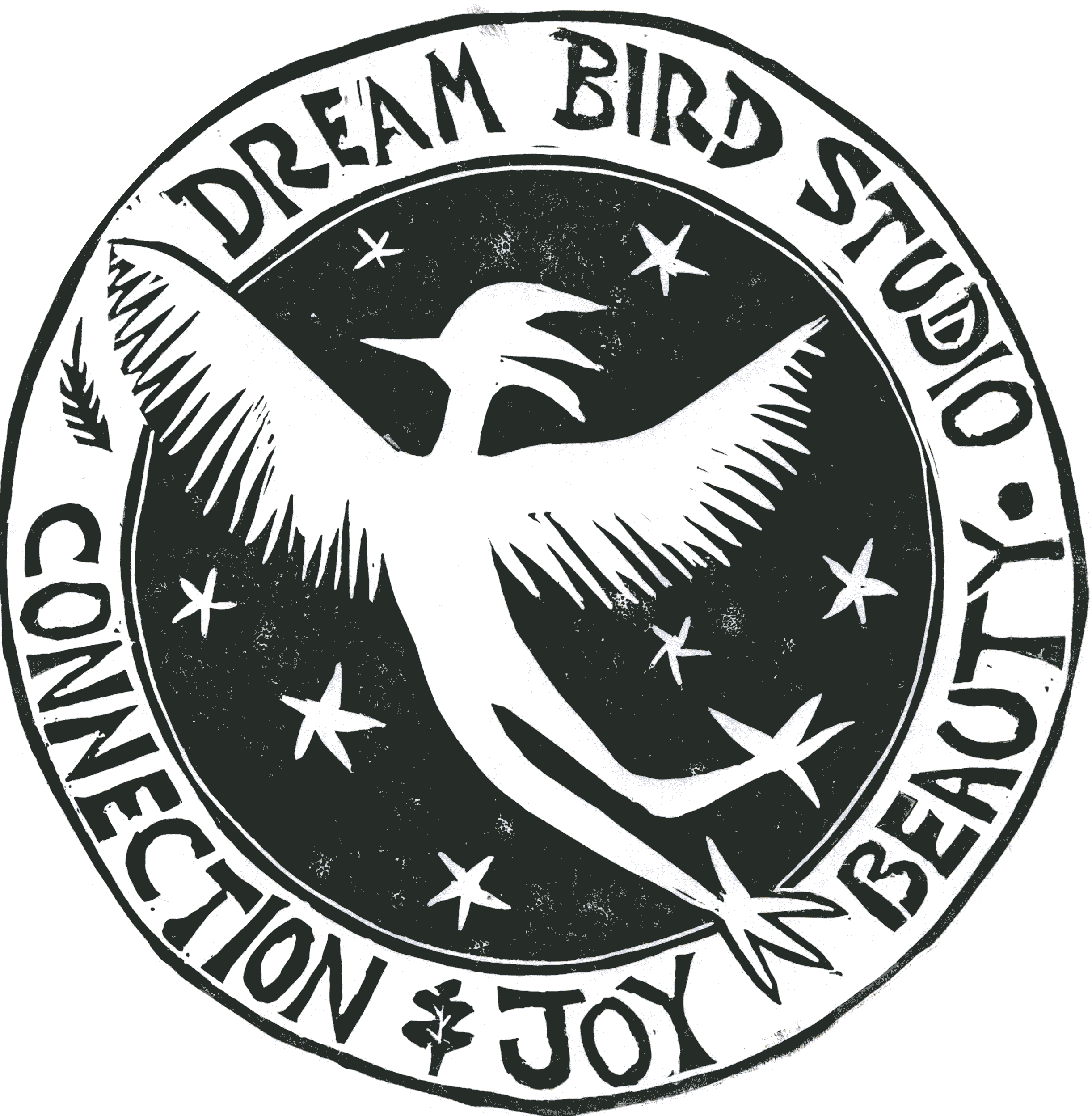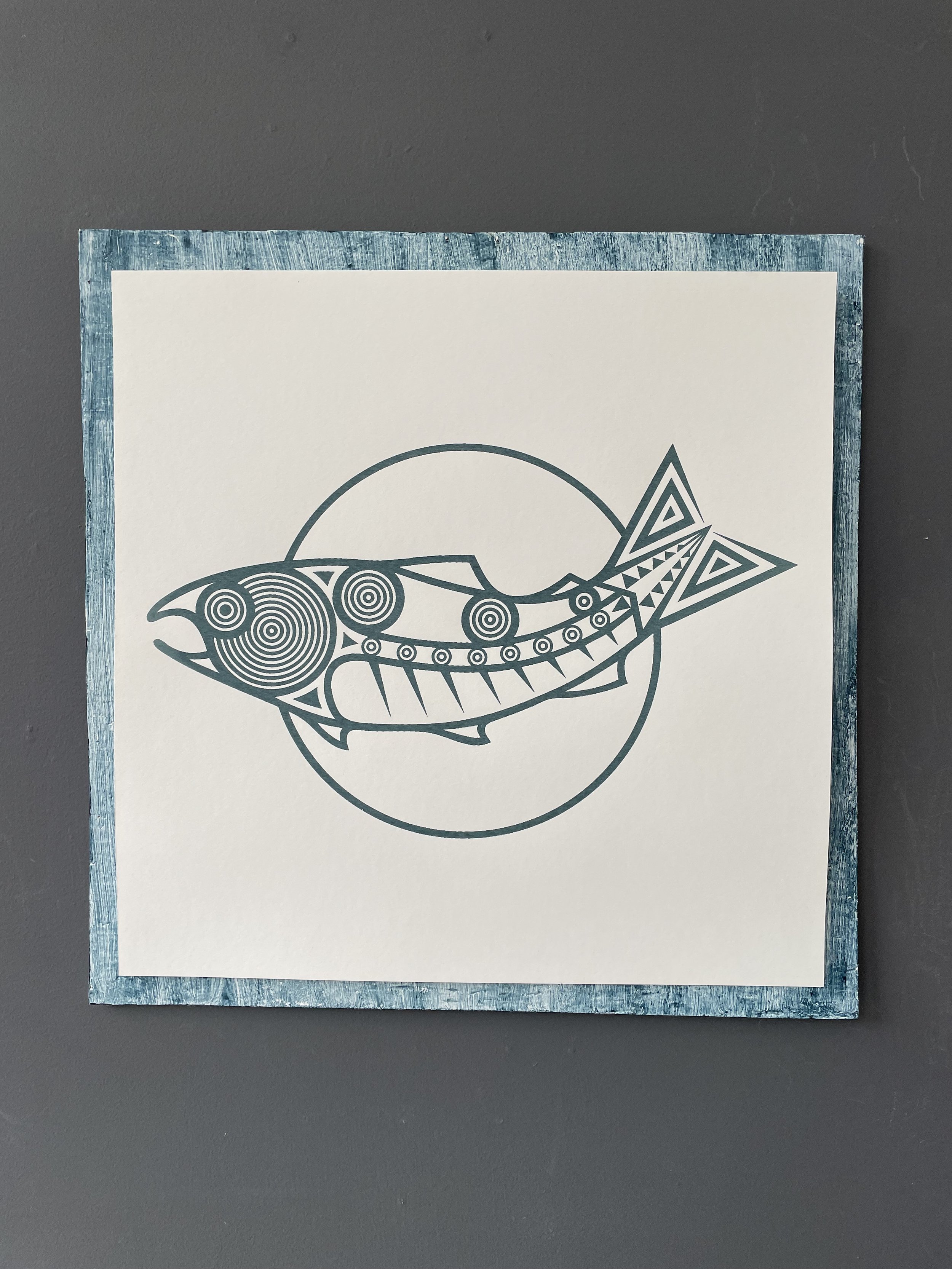Scott Sutton
Special Visitors to the Gallery to see Scott’s Work.
Scott Sutton
Studio Location:: Taos, NM
Title of Piece: 1.Salmon Scale
2.Salmon Life Cycle
Materials Used: Persicaria Tinctoria
Price: $300 / print
Primary Techniques: Superfund Salmon Lifecycle & Superfund Salmon Scale
Type of Vat: NA
Other Applications: Watercolor paint / ink for silkscreen printing
Artist Bio: Scott Sutton is a multidisciplinary artist who works in a variety of mediums in two & three dimensional art forms. The use of natural pigments collected from the Earth to plant based dyes & lakes pigments that he grows in his garden has been an integral part of his art and creative process! Scott – Pigment Hunter - has been working as an arts educator teaching other artists how to sustainably collect colors from the land for over eighteen years. Scott first started collecting minerals and soils on the ancestral lands of the Confederated Tribes of Grand Ronde in the diverse landscapes around Portland, OR. Scott also worked as an art instructor for five years teaching within the Lifeways program at the Confederated Tribes of Grand Ronde’s cultural offices in Portland, Eugene, and Grand Ronde. During this time Scott helped to discover sources of color on the ancestral lands and to integrate the use of these traditional pigments into a variety of art forms for tribal members to use in the creation of their own art.
Scott’s educational backgrounds include a Bachelor of Fine Arts from Oregon State University where he first learned how to make paints from his painting professor Sandy Brooke in 1996. Scott also studied at the University of New Mexico where he received a Master of Landscape Architecture in 2012. The landscape architecture program enabled him to integrate the use of mapping to assist in reading and understanding the interwoven dynamics of a landscape. These maps include the fundamental layers of topographical, geological, hyrdological, ecological, and cultural giving form to complex landscapes and interconnected systems that sustain all life. The mapping process has become an integral part of the creation of his art and teachings methods focused on pigment hunting along with developing methods for ecological reciprocity through regenerative practices.
Artist Statement about Piece: These works of art focused on the Superfund Salmon represent a keystone species within the Columbia River Basin and whose lives nurture not only the next generation of salmon, but also the traditional Salmon People who have lived for thousands of years along the Columbia River and its tributaries while sustaining a diversity of ecosystems throughout the entire watershed. The Salmon Life Cycle and Salmon Scale prints are printed with an indigo blue pigment harvested from Persicaria tinctoria that was grown on a Superfund Site along the Willamette River. The indigo blue bearing plants were grown on the ancestral lands of the Multnomah Chinook just upstream from Sauvies Island where the Willamette River flows into the Columbia River as a major tributary to the Columbia River Basin Watershed. The indigo was grown in a greenhouse on a historic shipping building site for WWII that is now part of the Portland Harbor Superfund Site and industrial sanctuary that is also a brownfield. This site and the adjacent riverfront property housed ancestral villages of the Mutlnomah Chinookan people who lived in cedar plankhouses just below what is now St Johns Bridge in Cathedral Park.
The Salmon Life Cycle print represents the necessity for salmon to move freely from the river to the ocean and back to its spawning grounds. The salmon must be able to swim past numerous dams and other obstructions, through polluted waters and Superfund sites in order to migrate from its spawning grounds in the headwaters of subwatersheds to the ocean and eventually back to where they are born in order to give birth to the next generation. The design of the salmon lifecycle print also is influenced by the Columbia River Art form and was created during the time while teaching in the Lifeways program at the Confederated Tribes of Grand Ronde. Within the elements of this design are both life and death that can be seen in the skeletal form of the vertebrae and the physical body that gives life to countless other species. The concentric patterns also reflect the nature of life’s cycles and season as ripples in water that reflects the impacts we have on the watershed as a society - Water is Life – on the health of the Salmon as well as future generations of humans that both rely on the ecosystems that sustain us.
The Salmon Scale print is symbolic in its form as it signifies the interconnection of salmon, people, and trees. The scale of a salmon looks very similar to the fingerprint of a human and the growth rings of a tree. This similarity may seem like a unique coincidence, but in reality it reveals how interwoven an ecosystem is and that we as a human culture are truly an integrated part of nature. Another important element of the salmon scale is that it also contains growth rings indicating how many years it has lived its life in the fresh water and salt water during its seasonal migrations. All Salmon species migrate back to their spawning grounds with the guidance of their ability to intrinsically sense the unique mineral content that is composed in the form of chemical fingerprint of their birth place. If the spawning grounds or the streams and rivers are altered through actions causing a distortion in these fingerprints that help guide them home as the result of impacts caused by pollution from factories, mines, agriculture, or other industrial facilities created by humanity then we as a society are greatly impacting not only the health of the salmon, but also the birth of the next generation in the spawning grounds giving life to the very ecosystems that sustain us.
Artists of the Matrix - LInks
Rosa Sung Ji Chang - Baltimore, MD
Catharine Ellis - Waynesville, NC
Debra Ketchum Jircik - Eagle River, WI
Scott C Johnson - Cannon Beach, OR
Marian Martínez González- Basque Country, Spain
Madeline McGarrity - Andover, NJ
Bernadette Puleo - Dix Hills, NY




